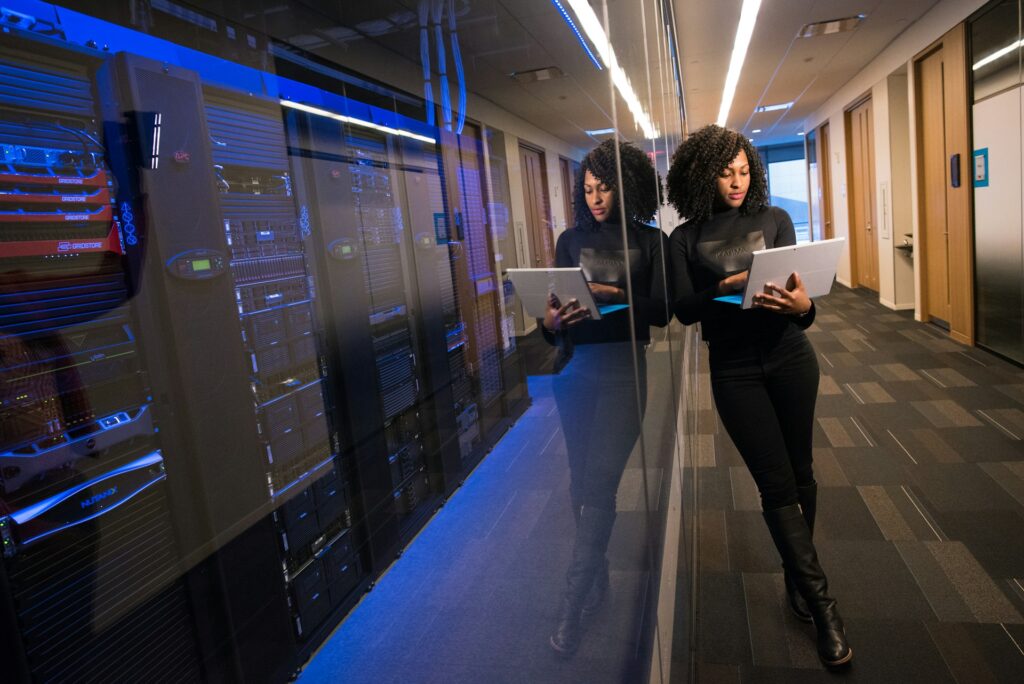Introduction: Welcome to the world of technology, where innovation knows no bounds and advancements redefine our lives daily. In this article, we delve into the dynamic landscape of technology trends, exploring their development, impact, and future implications.
Define the Technological Landscape
The technological landscape encompasses a vast array of innovations, from artificial intelligence to blockchain, each revolutionizing industries and reshaping societies.
Relevance and Importance of Technology Trends
Understanding and adapting to technology trends are crucial for businesses, governments, and individuals alike. They drive progress, enhance efficiency, and unlock new possibilities in various sectors.
Technical Specifications
Delving into the technical specifications of emerging technologies provides insight into their capabilities and potential applications.
AI and Machine Learning
AI systems simulate human intelligence processes, including learning, reasoning, and problem-solving. Machine learning, a subset of AI, enables systems to learn from data and improve performance over time.
Blockchain Technology
Blockchain is a decentralized, distributed ledger technology that ensures transparent, secure, and tamper-proof transactions across networks. Its key components include blocks, cryptographic hashes, and consensus mechanisms.
Internet of Things (IoT)
IoT connects devices and objects to the internet, enabling data exchange and remote control. It comprises sensors, actuators, connectivity, and data processing components.
5G Networks
5G networks offer ultra-fast speeds, low latency, and high reliability, unlocking transformative applications such as autonomous vehicles, remote surgery, and immersive experiences.
Applications
The applications of technology trends span various industries, revolutionizing processes, and enhancing experiences.
Healthcare
In healthcare, AI and machine learning facilitate diagnosis, personalized treatment plans, and drug discovery. IoT devices monitor patient health remotely, while blockchain ensures secure data sharing and interoperability.
Finance
Blockchain revolutionizes finance through cryptocurrencies, smart contracts, and decentralized finance (DeFi) platforms. AI-driven algorithms optimize trading strategies and risk management, while IoT enhances transaction security and fraud detection.
Transportation
Autonomous vehicles powered by AI and IoT promise safer, more efficient transportation systems. Smart infrastructure, enabled by 5G networks, coordinates traffic flow and reduces congestion, while blockchain ensures transparent and secure logistics.
Education
In education, technology trends enable personalized learning experiences, virtual classrooms, and interactive content creation. AI-powered tutoring systems adapt to individual student needs, while blockchain credentials verify academic achievements securely.
Benefits
The adoption of technology trends yields numerous benefits, driving innovation, efficiency, and sustainability.
Enhanced Efficiency
Automation and optimization enabled by AI, IoT, and blockchain streamline processes, reducing costs and improving productivity across industries.
Improved Quality of Life
Technology trends enhance healthcare outcomes, increase access to education, and create new opportunities for economic and social development.
Sustainable Development
Technological innovations promote sustainability through renewable energy solutions, efficient resource management, and transparent supply chains enabled by blockchain.
Challenges and Limitations
Despite their transformative potential, technology trends pose challenges and limitations that must be addressed for widespread adoption.
Privacy and Security Concerns
Data privacy breaches, cybersecurity threats, and potential misuse of AI algorithms raise concerns about the protection of personal information and digital assets.
Ethical and Societal Implications
The ethical implications of AI decision-making, job displacement due to automation, and digital divides highlight the need for responsible innovation and inclusive policies.
Infrastructure and Connectivity Issues
Unequal access to high-speed internet, interoperability challenges in IoT ecosystems, and scalability limitations of blockchain networks hinder technological advancements in certain regions.
Latest Innovations
The rapid pace of innovation in technology continues to drive new advancements and disrupt traditional paradigms.
Quantum Computing
Quantum computing harnesses the principles of quantum mechanics to perform complex calculations exponentially faster than classical computers, unlocking new possibilities in cryptography, materials science, and drug discovery.
Edge Computing
Edge computing decentralizes data processing and storage, enabling real-time analysis and decision-making at the network edge. It enhances IoT applications, reduces latency, and conserves bandwidth.
Biotechnology
Advancements in biotechnology, including gene editing, synthetic biology, and personalized medicine, revolutionize healthcare, agriculture, and environmental conservation efforts.
Future Prospects
Looking ahead, technology trends will continue to evolve, shaping the future of industries and societies worldwide.
AI Augmentation
AI augmentation integrates human intelligence with AI systems, empowering individuals to make informed decisions and augmenting human capabilities across various domains.
Decentralized Web
The decentralized web, powered by blockchain and peer-to-peer networks, promises enhanced privacy, security, and censorship resistance, fostering a more open and inclusive digital ecosystem.
Space Exploration
Advancements in space technology, including reusable rockets, asteroid mining, and interplanetary colonization efforts, pave the way for humanity’s expansion into the cosmos.
Comparative Analysis
Comparing different technology trends provides valuable insights into their strengths, weaknesses, and potential synergies.
AI vs. Human Intelligence
While AI excels in data processing and pattern recognition tasks, human intelligence remains unparalleled in creative thinking, emotional understanding, and ethical decision-making.
Centralized vs. Decentralized Systems
Centralized systems offer efficiency and control but are susceptible to single points of failure and censorship. Decentralized systems prioritize resilience and transparency but face scalability and governance challenges.
Traditional vs. Emerging Technologies
Traditional technologies have proven reliability and established infrastructures but may lack the agility and innovation potential of emerging technologies like AI, blockchain, and IoT.
User Guides or Tutorials
Practical user guides and tutorials empower individuals and organizations to leverage technology trends effectively.
AI Implementation Guide
Implementing AI in business requires defining clear objectives, collecting high-quality data, selecting appropriate algorithms, and continuously evaluating performance.
Blockchain Deployment Tutorial
Deploying blockchain solutions involves choosing the right consensus mechanism, designing smart contracts, ensuring network security, and fostering community engagement.
IoT Integration Handbook
Integrating IoT devices into existing systems requires assessing compatibility, ensuring data interoperability, addressing security vulnerabilities, and optimizing network performance.
Conclusion
In conclusion, technology trends are driving unprecedented innovation, transforming industries, and reshaping societies worldwide. Embracing these trends, understanding their implications, and fostering responsible innovation are essential for navigating the complexities of tomorrow’s world.

